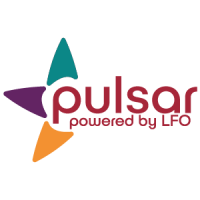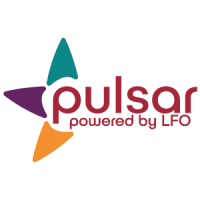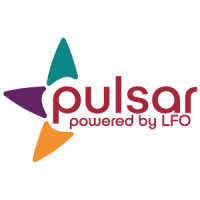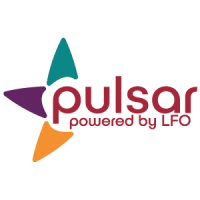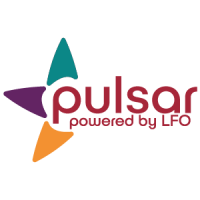The key concepts covered in this module are:
- I can explain the purpose and benefits of language learning portfolios like Pulsar.
- I can perform and explain the basic functionalities (i.e., registering students and uploading evidence) of Pulsar.
- I can create an approach for the implementation of Pulsar in my classroom that fits my specialized context.
Specifically, this module addresses the following TELL Domains: PF 1, PF 2, PF 3, and LT4.

- Performance & Feedback : PF1a. My students demonstrate growth relative to the performance objectives.
- Performance & Feedback : PF1b. My students demonstrate growth relative to the targeted proficiency level.
- Performance & Feedback : PF1c. My students demonstrate growth across the modes of communication.
- Performance & Feedback : PF2c. I provide feedback that is supported by evidence from the student performance.
- Performance & Feedback : PF3a. My students engage in self-assessment and peer review to monitor progress toward the targeted performance objectives and their own language and culture goals.
- Performance & Feedback : PF3d. My students determine their next steps toward improvement of performance.
- Learning Tools : LT4a. I use a variety of tools to clearly communicate realistic expectations for student performance.
- Learning Tools : LT4c. My students and I use tools to benchmark student growth.
- Learning Tools : LT4d. I provide my students with tools and processes to reflect on their growth.
Welcome to Pulsar! This training module is for STARTALK instructors who are experienced language learning portfolio users.
Begin Self-AssessmentContext:
Assess your current knowledge. The key concepts covered in this module are:
- I can create an approach for the implementation of Pulsar that fits my specialized context.
- I can identify and explain high-quality opportunities to collect evidence of student language proficiency.
- I can embed reflection throughout my language course.
Assess yourself now!
Remember, this training is for teachers who already have some idea of how to implement language learning portfolios like Pulsar in their classrooms. However, feel free to use this in combination with the materials in the module for new teachers.
Assess your current knowledge. The key concepts covered in this module are:
- I can create an approach for the implementation of Pulsar that fits my specialized context.
- I can identify and explain high-quality opportunities to collect evidence of student language proficiency.
- I can embed reflection throughout my language course.
___________________________________________________
Create an approach for the implementation of Pulsar: Designing your implementation approach for Pulsar is relatively simple! You just need to decide upon 1) the frequency with which your students will upload evidence, 2) the type of evidence students will upload and save, and 3) the tools (computers, mobile devices, or both) that you will use for evidence capture.
Read Considerations for Classroom Implementation, our Computer Lab Implementation Guide and our Mobile Device Implementation Guide. Then, answer the questions in “Check for Learning 1.”
___________________________________________________
Identify and explain high-quality opportunities for evidence collection: Evidence can include any artifact that students create to support their abilities to demonstrate their present mastery of the learning targets (Can-Do Statements) in Pulsar. Thus, evidence can take make forms! A variety of media types can be uploaded to Pulsar, including text documents, audio files, video files, and evidence from Web 2.0 applications.
Teachers may find Stage 2 of the SOPHIE Curriculum Template useful when deciding what evidence to have learners upload. Any evidence created that demonstrates mastery of those Can-Do Statements will do; that which was created as part of the performance assessment task, and that which was created to prepare for it. However the teacher intends to use the evidence should drive its selection; if the teacher wants to give feedback and have students to reflect on a specific task, the work they do for that task can be uploaded, but if the teacher wants the students to consider their growth overtime, the students will likely have more autonomy in selecting their evidence.
It is important to help students think about the evidence that would best demonstrate their language abilities and how that matches with the mode of communication at hand. They also should be aware of the characteristics that apply to different proficiency levels. Our Proficiency Examples may be helpful to use with students. Look over them, then complete “Check for Learning 2.”
___________________________________________________
Embed reflection throughout the course: As is mentioned in the Mobile Device Implementation Guide and the Computer Lab Implementation Guide, student reflection should happen on a continual basis. However, it must be scaffolded for students to achieve desired outcomes. Please use our Student Reflection Guide as you work with your students.
Think about your implementation plan and complete “Check for Learning 3.”
- Based on the information presented in this section of the module, is this an area of growth or area of strength for your teaching? Why? What understandings did you have confirmed or challenged?
- What information caught your attention? What was the most meaningful part? What surprised you or what “ah-ha” moments did you have? Why?
- What, if anything made you uncomfortable Why? What will you do to address this discomfort?
Assess your current knowledge. The key concepts covered in this module are:
- I can create an approach for the implementation of Pulsar that fits my specialized context.
- I can identify and explain high-quality opportunities to collect evidence of student language proficiency.
- I can embed reflection throughout my language course.
___________________________________________________
Create an approach for the implementation of Pulsar: Read over and consider this completed implementation plan.
Then complete “Check for Learning 1.”
___________________________________________________
Identify high-quality opportunities for evidence collection:
- Step 1: Watch this video starting at about 8:20 and identify at least three evidence samples created by students. Although this video was designed for LinguaFolio Online and not specifically for Pulsar, the approach to incorporating evidence collection and reflection in the class is relevant in a STARTALK context as well.
- Step 2: Take a look at this Classroom Activity Description.
Complete “Check for Learning 2.”
___________________________________________________
Embed reflection throughout the course: Now that you have observed classroom activities designed to produce high-quality evidence to upload to Pulsar, think about the various approaches to reflection embedded in each tool you observed (the Completed Implementation Plan, the video , and the Classroom Activity Description). Answer the question you see below in “Check for Learning 3.”
- Based on the information presented in this section of the module, is this an area of growth or area of strength for your teaching? Why? What understandings did you have confirmed or challenged?
- What information caught your attention? What was the most meaningful part? What surprised you or what “ah-ha” moments did you have? Why?
- What, if anything made you uncomfortable Why? What will you do to address this discomfort?
Assess your current knowledge. The key concepts covered in this module are:
- I can create an approach for the implementation of Pulsar that fits my specialized context.
- I can identify and explain high-quality opportunities to collect evidence of student language proficiency.
- I can embed reflection throughout my language course.
___________________________________________________
Create an approach for the implementation of Pulsar: Now that you’ve observed Pulsar, you might wonder how to apply it to your unique teaching context. Read Hypothetical Program Description and think about how you would actively use Pulsar in the described setting.
Now, answer the questions below in “Check for Learning 1.”
___________________________________________________
Identify high-quality opportunities for evidence collection: Consider the Hypothetical Program Description again as you answer the questions in “Check for Learning 2.”
___________________________________________________
Embed reflection throughout your course:
Reflection and goal-setting go hand in hand. Reflection is crucial to the overall efficacy of a goal-driven, proficiency-based language class. Research has shown that goal-setting and reflection help students maintain focus and motivation, while also providing insight into and self-awareness of an individual’s learning style and self-concept [Moeller et al., 2012; Velandia, 2015].
With Pulsar, you can give your students the opportunity to reflect on their work and the evidence they have collected. Keep in mind that effective reflection requires integration of reflection tasks into the classroom.
Answer the question in “Check for Learning 3.”
- How was your thinking challenged as you moved from acquiring and observing to applying what you had learned?
- Consider what actions you’ll take next as a result of your learning and reflection. Identify at least one next step you will take in your teaching situation.
- How will you know that you have been successful in your implementation of checks for learning?
- What key learning should be shared with others?
Citations:
Lozano Velandia, S. A. (2015). Goal-setting and self-reflection to enhance learners’ interaction in an ESP context. Latin American Journal of Content and Language Integrated Learning, 8(2), 131-160. doi:10.5294/laclil.2015.8.2.4.
Moeller, Aleidine J., et al. (2012) Goal Setting and Student Achievement: A Longitudinal Study. Modern Language Journal, 96(2), 153-169.
Author: CASLS, University of Oregon
This page provides Pulsar users with tools for implementation (Student Reflection Guide, Computer Lab Implementation Plan, Mobile Device Implementation Plan, and the Implementation Plan Template). It also links Pulsar users to technical tutorials (PDFs and Videos) and to the internal version of this training module.
( )Author: CASLS, University of Oregon
This resource was developed for Pulsar users. It is a classroom activity description that should be used for identifying at which points in instruction learners should be able to capture evidence to upload to Pulsar.
( )Author: CASLS, University of Oregon
This resource was designed for Pulsar users. It can be shared with students to increase their understanding of the different levels of language proficiency.
( )Author: CASLS, University of Oregon
This video was designed for LinguaFolio Online but is relevant to Pulsar users as well. Begin the video at 8:20 to see an overview of evidence that could potentially be uploaded to Pulsar as well as some approaches to reflection integrated into a classroom.
( )Author: CASLS, University of Oregon
This resource provides a description of a hypothetical STARTALK program for Pulsar users. It is intended to facilitate deep understanding of how to incorporate Pulsar into STARTALK courses.
( )
